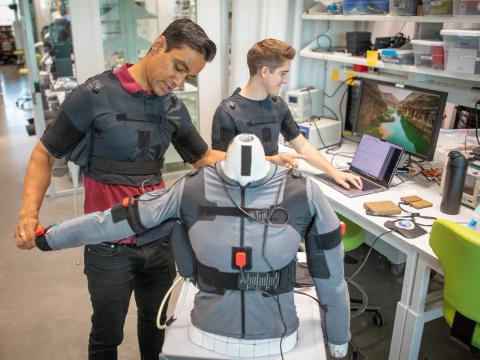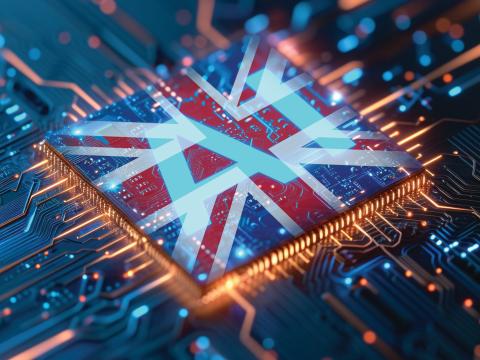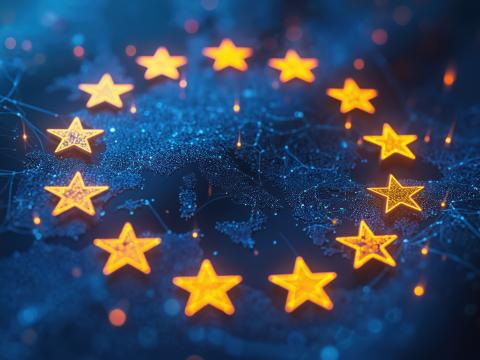Artificial Intelligence Will Change Human Value(s)
The changes that artificial intelligence will bring to the technology landscape could pale in comparison to what it wreaks on global society. Humans need not be taken over by intelligent machines, as some doomsday soothsayers predict, to face a brave new world in which they must revolutionize the way they conduct their daily existence. From employment upheaval to environmental maintenance, people may face hard choices as they adapt to the widespread influence of artificial intelligence advances.
Experts offer that artificial intelligence (AI) itself will undergo significant growing pains as it transitions from childhood into adolescence. Where ongoing research largely focuses on applied AI, it eventually will expand to cover a broader range of aspects. Revolutionary computing technologies also will contribute to AI growth. Ultimately, overall AI research will lead to its maturity.
“AI is becoming the single most influential human innovation in history,” states Anitha Raj, president of ARAR Technology. She says that AI will represent the third era of computing, following the mainframe and PC/Internet eras. However, she adds, we are nowhere near the goal of building intelligent machines that can completely duplicate what a human does.
Raj describes two major components of AI: machine learning and symbolic learning. Machine learning depends completely on databases and logic, she explains, while symbolic learning is closer to human knowledge built on sensory perception. A symbolic-learning-based robot, for example, moves based on what it sees.
William Halal, professor at The George Washington University and founder and chairman of TechCast Global, explains that AI research breaks down into two categories: general purpose AI, or “strong” AI; and applied AI, or “weak” AI. Applied AI, which constitutes most of the AI research today, is called weak because it focuses on a specific task and not on the concept of AI in general. Halal offers that general purpose AI will evolve from all of the weak AI research now and in the future. He compares this to humans having sub-routines that are collected into a single task.
Halal predicts that in about five or 10 years, many AI-driven capabilities will be routine throughout the United States. In turn, this will replace about 30 percent of routine tasks now performed by humans. This development largely will be the result of weak AI, he notes.
Halal offers that fears of an apocalyptic AI takeover of humanity are greatly exaggerated, as people fail to recognize what actually is happening. “This is a historic transition to a new stage of economic development,” he declares. People are fearful of the economic change that will be wrought by widespread automation.
Instead, people should recognize that “there is a frontier beyond knowledge,” he offers. “It consists of creative work that only people can do—entrepreneurial, leadership, collaboration. All those things that people are doing right now are going to grow dramatically in a very complex world where we will need a lot of those people doing those difficult jobs.”
This will change the way people learn, think, work and participate in society, he says. There is a base of complex, routine work that never will disappear. Less complex, routine-knowledge jobs in service and manufacturing will see losses of 30 to 40 percent by the late 2020s. More specialized work, such as doctors, lawyers and scientists, will continue to require humans to carry out the tasks. “Humans will not be relegated to pets,” he attests.
AI will change jobs by doing the basic work that detracts from what people can achieve in their professions, Halal states. These professionals will be able to perform more challenging and creative work, which should lead to about 10 percent growth in their jobs.
“AI will enable humans to tap unrealized potential by doing the grunt work,” he declares.
Raj notes that AI already is affecting day-to-day activities in the financial sector, national security, health care, criminal justice and transportation, to name a few. Globally, the leaders in industry are Google, Apple, Facebook, Amazon and Microsoft. Other technology companies, particularly in China, are investing billions in AI research. Big cloud providers are foremost among AI users for language translation and recognition, including facial, voice, image and speech.
“All aspects of humans are being studied and replicated as part of AI, except for taste and smell—and these two are coming soon,” Raj states.
She foresees major effects in the pharmaceutical industry, which already is using AI to develop new drugs. Once a machine learns how drugs are designed, its AI component can be used to repurpose an existing drug. The AI-driven software also can take into account potential human side effects to improve quality, she notes.
Medical imaging is benefitting from AI validation. Doctors can process more patients because AI performs vital analysis that is more accurate, Raj says. Liquid biopsies, in which cells or bacteria circulating in a patient’s bloodstream are isolated for comparison with large amounts of data, also is accelerated by AI.
On the defense and security side, AI enables facial recognition in large-scale video surveillance systems. China already has deployed 200 million video cameras around its cities, Raj reports, and this number is expected to double over the next two years. Humans could not effectively review all the data collected by those cameras, but AI is sorting images for law enforcement.
In the United States, the Maven project originally developed AI for battlefield drone strikes. The Defense Department recently established a new joint AI center that would be a model for future AI efforts, Raj says.
AI has improved its computer vision considerably, she adds. It can take advantage of more data, including that collected by satellite, for a greater range of applications. For example, the insurance industry is able to automate property claims more accurately and detect automobile fraud. In agriculture, AI can analyze imagery to ascertain crop health and forecast yield.
This will be vital for boosting food production as population growth nears 10 billion people by mid-century. AI greenhouse control will allow increased and more diverse crop growth irrespective of climate, she notes, thus opening up new venues for agriculture.
In computer vision, machine learning models associate each of the pixels to objects, and they are able to identify which objects are shown, Raj points out. AI deep learning is the key enabler for labeling videos for both action and objects, she explains. Machine learning models are taught to understand a video, after which data sets are built.
Once this type of deep learning model is established, it will be able to start predicting, she offers. It may not be 100 percent accurate in its early stages, but it will learn how to improve its prediction accuracy. Ongoing neural network research will boost computer vision, she adds.
Information technology advances will empower greater AI use. Raj explains that AI requires a strong machine to process information, and the semiconductors used for AI applications need to be much more powerful than those currently available. Most computers use central processing units (CPUs), but AI needs to learn from capabilities such as image recognition.
New graphic processor units are being embedded in chipboards so the hardware is AI-ready, and early results can be found in games. Google has a version in its GPU-2, which has become obsolete with the development of GPU-3. The four chips constituting GPU-3 feature 128 gigabytes of bandwidth and twice the power of its immediate predecessor, she says. Another traditional graphics chipmaker, NVIDIA, is developing a new AI chip that will generate better graphics and image manipulation.
But the major evolution in AI will ensue with the development of generational advances in supporting technologies. Foremost will be computing power, Halal offers. He predicts that the bulk of AI development will take place with the appearance of second-generation computing architectures. Silicon will have to be replaced by quantum or optical computing for AI to realize its full potential.
Raj predicts that AI advances will eliminate more jobs than they create. Halal suggests that during the employment evolution, the government may need to mitigate the changeover by providing a guaranteed annual income that would soften the blow of unemployment. It could conceivably be applied to 10 percent of the labor force, he adds.
Young people who don’t want to become professionals should enroll in a community college to gain the skills to be machine technicians instead of operators, Halal continues. These will be better jobs than current manufacturing work provides, he emphasizes.
But this is just one path for a particular type of work. The K-12 school system will need to change the way it educates students from the beginning. Instead of rote education or fact instruction, it will have to teach young people how to think creatively in this AI-driven environment. “The people-in-seats approach of teaching that we’ve been doing all of these years, in which you try to stuff knowledge down their throats, will disappear,” he predicts. Instead, teachers will help students figure out what they want to do, and why, to prepare them to find their way in the world. “The shift will be from teaching to learning,” he says. “People will have to learn how to learn on their own—and they’ll have to learn continuously.”
Current education curricula are based on “the sausage stuffing model,” Halal continues. The people are the casing, and the teacher stuffs the sausage material—knowledge—in the casing. That will disappear, he maintains, and it already is happening in some schools where students are engaged in the learning process. The teacher listens to the students and coaches them, instead of simply presenting knowledge in a lecture hall—which Halal says will become obsolete.
The changes wrought by AI will extend throughout society in ways that exceed the effects of the computer revolution. Halal offers that, as routine knowledge jobs are eliminated, the workforce will move up to the next logical phase of development, which is “beyond knowledge.” This comprises consciousness, values, beliefs and other things that are far more important than knowledge, he says.
Humans always will have a superior method that will surpass whatever machines achieve: collective knowledge. “If we pool the knowledge of humans, then we will have something more powerful than the individual choices of the machines,” he declares. Achieving that collective strength will require pooling human judgment across the globe, which is different from the way machines will work.
“We’re going to appreciate these extraordinary abilities of humans to do things that machines would never do,” Halal states. A value activity such as developing a creative vision is something that only humans can do, he emphasizes.
Well before then, rules and ethics for AI will have to be developed, Raj says. The focal point will be “where we draw the line” when AI comes into our life, she posits. A debate will emerge over whether AI should be regulated by government. It is not too early to begin examining this touchy issue, she adds.
So-called fake news, already a problem, will burgeon with AI. People must ask questions about policies, regulations and ethical issues surrounding the new AI-driven data access. “How can we guard against bias, and how can we be transparent about designing AI?” she asks.
On the legal front, a new definition for legal liability may be required in case algorithms cause harm. “We as human beings are programming the computers, and then we are expecting them to answer correctly,” she points out. “But if they don’t answer correctly, who is liable? The programmer? Or the machine? Those are some nitty-gritty things we have to look at.”
By 2050, AI will have matured into general, or strong, AI, Halal says. This will be the turning point for the widespread societal changes coming. Most of the 10 billion people on Earth then will be educated, and poverty will be mostly eliminated as a result of advances brought about by AI, he predicts.
Ultimately, the drive for cooperative action may lead to a type of unified global order, Halal suggests. This system would encompass all the different opinions and conflicts inherent in humankind. Consensus might lead to a global code of ethics or moral order, which is vital for an evolving community to function.
AI would not impose this global order, Halal notes. Instead, the capabilities it unleashes in people would lead to it, both out of necessity and as an opportunity. “We’re going to have to do it, because our problems are so enormous,” he declares. “It’s a crisis of maturity for humanity. Either we grow up and learn how to work together, or we’re going to perish as a civilization. The main role of AI is to force us to move up the ladder of social evolution.”





Comment
Great article! The term <a
Great article! The term <a href="https:/ /www. simplilearn. com/warning-signs-the-artificial-intelligence-ai-revolution-may-be-passing-you-by-article/">artificial intelligence</a> or AI conjures up images of futuristic technology and the promise of a strange intelligence that exceeds our own limits. But AI is also great at identifying threats to your internal infrastructure. With cyber crime rapidly on the rise, AI can be leveraged to catch hackers and cyber criminals at lightning speed and efficiency.
The whole AI "trend" does my
The whole AI "trend" does my head in. What everyone thinks is that we are getting "strong AI", i.e. Robotic thinking which will be a hug game changer. However, we are a long way from that, what everyone means today by AI is essentially Machine Learning. That's all it is. It is not really AI, simply a play on words.
It is very frustrating that people simply don't know what they are talking about and trying to build up something that doesn't exist.
As for everyone being educated and fed, good luck with that. There are things called culture, corruption, politics and so on that technology can't fight.While we are evolving at an extremely rapid rate from a technology perspective, as a species, we are not evolving at all. We are not kinder, not friendlier, not more helpful, not more caring, not more empathetic. Constant and persistent hacking and terrorist attacks are proof of this. We have such a long way to go.
Nice article! As AI is
Nice article! As AI is touching every industry. It will change the way we think now, The way we see the world. I'm pretty sure that AI has a great future.
Comments